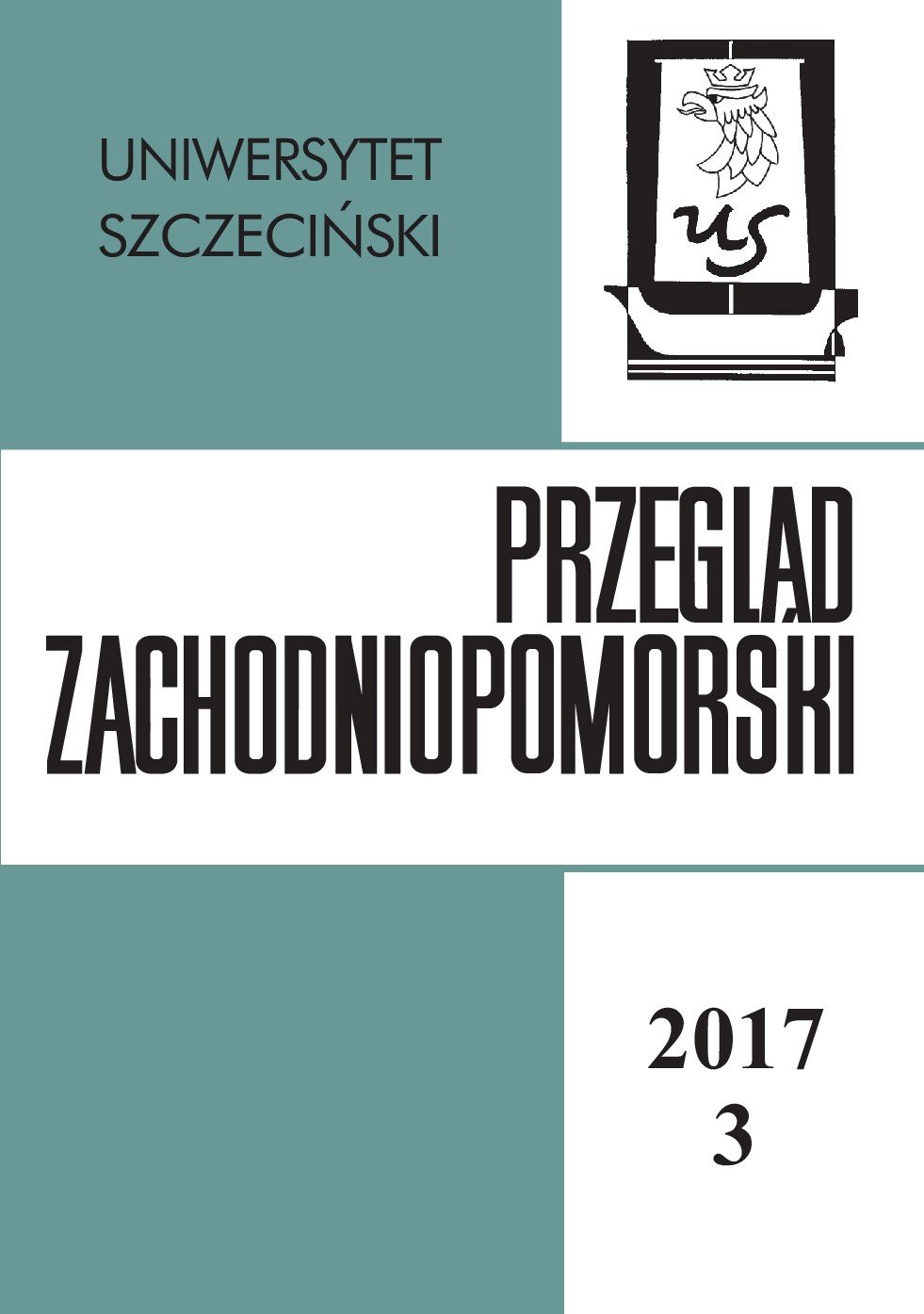Struktura własności dóbr ziemskich szlachty landwójtostwa słupskiego w XVI i w pierwszej połowie XVII wieku.
The structure of land ownership among the nobility of the Słupsk landvogtei in the 14th century and in the first half of the 15th century
Author(s): Kazimierz KallaurSubject(s): History, Social Sciences
Published by: Wydawnictwo Naukowe Uniwersytetu Szczecińskiego
Keywords: Pomerania; nobility; ethno-linguistic relations
Summary/Abstract: The article focuses on illustrating the attempt at outlining the main direction of the changes in the structure of land ownership among the nobility of the Słupsk landvogtei from the early 16th century to the period during which a part of Pomeranian Duchy was taken over by Brandenburg in 1648/1653. Another area of interest is the socio-economic, ethno-linguistic and legal history of the native nobility, a profile of whom was necessary in order to portray the conditions in which they lived and existed.The Słupsk landvogtei, a remnant of the territorial division from the Middle Ages, was an administrative, economic and taxing unit in which the most significant role was played by the property of the nobility. As indicated by the analysis of the sources from 1523, there were 32 knighthood families obliged to field cavalry in the area of the discussed landvogtei. The knighthood of Słupsk had to provide 122 horses out of which 90 (74%) had to be fielded by 18 families who originated from native Kashubian knighthood. Three families of Slavic origins, the Putkamer, Stojentin, Zitzewiz, who have been dominating in the landvogtei due to the size of their land properties, were obliged to field 56 horses (46%). The extraneous German knighthood families (Below, Gutzmerow, Kummel, Lettow, Ramel, Wejher, Winterfeld, Wobeser) and patrician towns of Słupsk (Schave, Vormann), who had manors in the Słupsk landvogtei, fielded only 32 horses, which constitutedfor 26% of the entire force. The analysis of the military duties register of the Słupsk knighthood from 1523 indicates that the river Słupia, namely its middle and lower course, constituted for a distinct border for settlement and property between the extraneous (German) ethnos and the native one (Kashubian-Pomeranian).From the Reformation to the Thirty Years’ War (1627–1648), the Kashubian language has decline in the researched area, in part due to the extinction of several Kashubian families (e.g. the Tessens) and the influx of new – foreign ones (Hepburn, Hoym, Nettelhorst). The German-speaking populace has expanded its land property. Over the course of a hundred years, the entire middle and lower basin of Słupia became controlled by the town of Słupsk, its patriciate, and the German-speaking nobility. In some areas, it extended beyond the course of the river Łupawa. In the light of the lan register from 1628, created in relation to the occupation of the Duchy of Pomerania by the Imperial forces, the Pomeranian-Kashubian nobility (who were very fragmented at that time) owned 60% of the tax lans, but of a lower soil bonitation. The lesser nobility dominated among the most numerous families of Slavic origins (Putkamer, Stojentin, Zitzewitz), but only seemingly wealthy. The noble families of German origins owned ca. 40% of the tax lans, but they were still not as numerous as the Kashubian-Pomeranian families. The land property of an average German speaker, on the other hand, was greater than that of a Kashubian-Pomeranian noble. Among the German-speaking families, the most numerous and the wealthiest were the Wobesers, Belows and Massows. Another analysis of the changes in the structure of land ownership among the nobility of the landvogtei and synod of Słupsk was conducted based on the tax registers from 1655 and 1666. The registers were drawn up by request of the Elector Frederick William by individual land owners. The distinctive feature of the land ownership among the nobility in the Słupsk landvogtei in the middle of the 17th century, aside from the significant fragmentation, especially along its eastern border, was the increase in the property ownership and the improved economic standing of the foreign nobility.
Journal: Przegląd Zachodniopomorski
- Issue Year: 32/2017
- Issue No: 03
- Page Range: 69-92
- Page Count: 24
- Language: Polish

